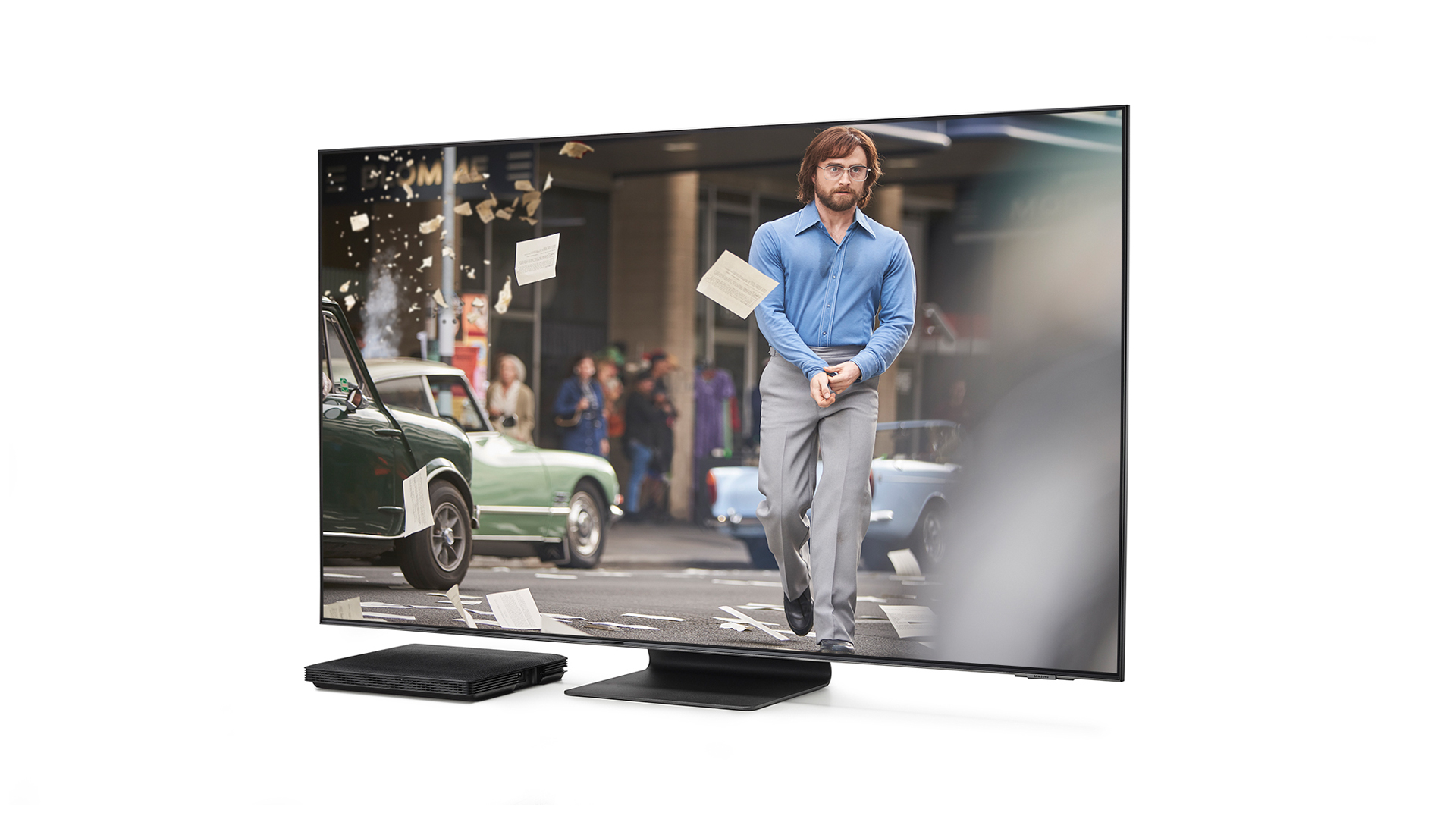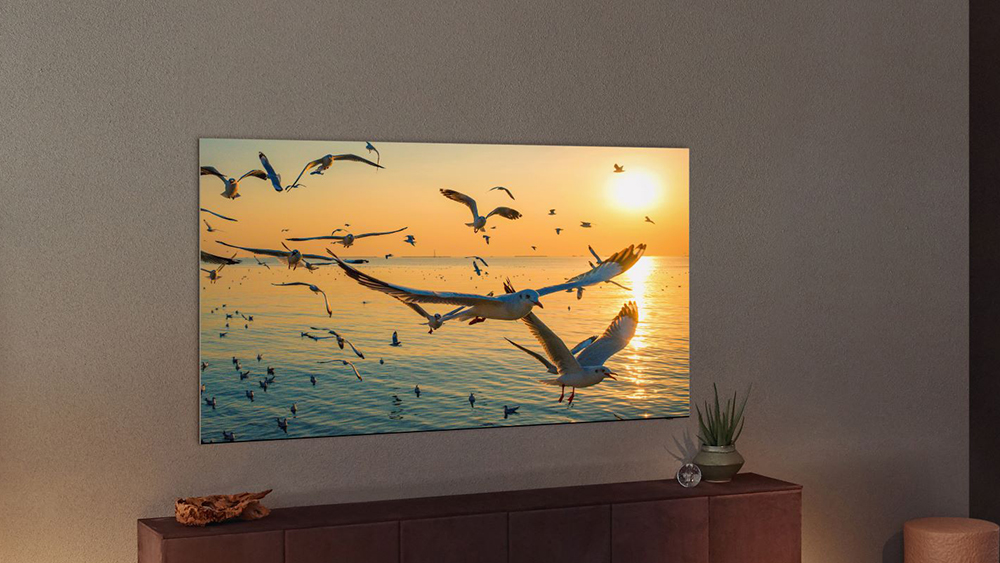What Does the O in Oled Stand for
OLED vs QLED: Which is the best TV technology?

These are halcyon days for TV technology. Ultra HD 4K is now well established, 8K TVs are becoming more common, HDR is readily available, and streaming puts a near-infinite supply of content at our fingerprints all day, every day.
But these are also confusing times for TV technology, with new acronyms and marketing terms raining down like confetti at the wedding of the managing director of a confetti company.
One of the ongoing confusions lies in the comparison between the two technologies competing at the premium end of the TV market: OLED and QLED. So what exactly are they, what's the difference, and which is in pole position if you want the best possible picture? Allow us to fill you in.
OLED pros and cons

OLED (Organic Light-Emitting Diode) is a type of display tech that consists of a carbon-based film through which two conductors pass a current, causing it to emit light.
Crucially, this light can be emitted on a pixel-by-pixel basis, so a bright white or coloured pixel can appear next to one that's totally black or an entirely different colour, with neither impacting the other.
This is in direct contrast to a traditional LCD TV, which relies on a separate backlight to generate light that's then passed through a layer of pixels.
Despite many attempts over the years, no TV with a backlight has ever managed to completely eradicate the issue of light bleeding from an intentionally bright pixel to those around it.

Other advantages of OLED are that the panels are lighter and thinner than a typical LCD/LED arrangement, viewing angles tend to be significantly wider, and response times can be supremely quick.
One disadvantage is that OLEDs are comparatively expensive to produce. Prices are steadily getting more realistic – thanks in no small part to LG (currently the only producer of OLED panels for TVs) selling panels to other manufacturers such as Sony, Panasonic and Philips, increasing both the amount being produced and competition in the shops – but OLED TVs still tend to be a fair bit more expensive than standard LCD models. That said, Samsung's QLEDs tend to be closer to OLEDs on price than to LCDs.
Sizes can be an issue where OLEDs are concerned, too. Until very recently, you couldn't buy an OLED TV smaller than 55 inches. 48-inch OLEDs appeared for the first time in 2020, with the excellent LG OLED48CX leading the way, but they're produced in relatively low numbers and tend to be barely any more affordable than their 55-inch equivalents, making them very pricey from sub-50-inch TVs. 42-inch OLED TVs are said to now be on the way and could in theory be produced – and therefore sold – much more cheaply, but no specific models have yet been announced.
OLEDs also struggle to reach the same peak brightness levels of even an average backlit model. Even extra-bright OLED models such as the new LG OLED65G1 and Panasonic TX-55HZ2000 struggle to get even half as bright as a flagship QLED, although the perfect blacks do go at least some way towards compensating for that by creating exceptional overall contrast.
Finally, the organic nature of an OLED panel means it's potentially susceptible to image retention and even burn-in, in a similar way to the plasma TVs of old. This really doesn't seem to be a widespread problem, though. We've never had image retention problems with any of the OLEDs that we've tested (or the models that staff members have bought for use at home) and manufacturers do build in features to reduce the risk.
That said, those manufacturers do still feel the need to warn customers about the potential for image retention either in the TV's manual or as a pop-up message on first installation, so make of that what you will.
- What is OLED TV? The tech, the benefits, the best OLED TVs
- Best OLED TV deals
QLED pros and cons

The one major TV manufacturer not aboard the OLED train (at least not yet) is Samsung, which is instead promoting a rival technology called QLED.
QLED stands for Quantum-dot Light-Emitting Diode which, in theory at least, has a great deal in common with OLED, most notably in that that each pixel can emit its own light, in this case thanks to quantum dots - tiny semiconductor particles only a few nanometres in size.
These quantum dots are (again, in theory) capable of giving off incredibly bright, vibrant and diverse colours – even more so than OLED.
The problem is that the quantum dots used in current QLED TVs do not in fact emit their own light. Instead, they simply have the light from a backlight passed through them, in just the same way that an LCD layer does on standard LCD/LED TVs.
Quantum dots still improve colour vibrancy and control over LCD, but this isn't really the next-gen, game-changing technology that Samsung has always suggested with its QLED branding.
- Which 2021 Samsung QLED TV should you buy?

OLED's ability to light each pixel individually gives it an undeniable advantage over QLED. While overall brightness levels are lower, contrast is still incredibly impressive.
This year, Samsung has sought to increase the contrast of its QLED models by switching from standard LED backlights to Mini LED backlights for its most premium models, which it refers to as 'Neo QLED' TVs. As the name suggests, these backlights use much smaller LEDs – they genuinely resemble sparkly grains of sand – that can be packed in in far higher quantities. By increasing the number of LEDs, the number of independent dimming zones can also be increased, resulting in significantly greater contrast.
The flagship QE65QN95A, for example, is thought to have around 800 independent dimming zones (Samsung doesn't confirm specific numbers) – that's a huge increase on the approximately 120 zones of its 2020 predecessor. Of course, because every pixel of an OLED TV can be controlled independently, it essentially has over 8-million independent dimming zones, but the new Neo QLEDs are clearly a step towards sets that combine the contrast of OLED with the brightness and longevity of backlit sets.
But things get really exciting when we look forward to those next-gen quantum dots that will be capable of emitting their own light. These photoluminescent quantum dots will give the TV the ability to light up and turn off individual pixels, just like an OLED set, while theoretically retaining the advantages of greater vibrancy and brightness.
Unfortunately, it looks as though TVs that utilise these new quantum dots are still a long way off. In fact, all has gone quiet on that front, with Samsung's premium TV plans recently focused on 8K QLEDs and MicroLED.
In the near-future, it seems that Samsung could be about to swallow its pride, ditch its anti-OLED rhetoric and launch its own OLED models. Recent reports suggest that the company could be set to launch a range of QD-OLED TVs that combine blue OLED material with red and green quantum dots. It's thought that these QD-OLEDs might be capable of going brighter and being more vibrant than current OLED TVs, but there's no real reason to expect them to be any less susceptible to burn-in.
Most surprising of all is another report that suggests Samsung is also going to purchase standard OLED panels from LG. That leaves us with the tantalising prospect of Samsung, after years of active campaigning against OLED technology, launching two distinct OLED TV ranges of its own in 2022.
- What is QLED TV?
- What is MicroLED?
Final verdict
It's going to be a while before MicroLED is a realistic proposition for most people and self-emissive quantum dots are even further away. Those impending QD-OLED TVs may blend some of the qualities of QLED and OLED, but it seems unlikely that they'll truly prove to be the best of both worlds.
With the Holy Grail of TV still likely a long way off, then, a TV buyer in the here and now is forced to choose which combination of strengths and compromises best suits their taste.
Samsung's QLEDs absolutely deliver a brighter and punchier picture than their OLED rivals, and in recent years have impressively closed the gap in terms of black depth and viewing angles. The new, Mini LED-backlit Neo QLEDs are yet another step in that direction.
OLED still has a slight advantage in these regards, though, and while OLED TVs don't go as bright as QLEDs, their self-emissive properties make for absolutely stunning contrast.
One other thing to bear in mind is that the panel technology used is only one part of the picture puzzle, with a set's processing making a big difference to performance. That's why OLEDs from LG, Philips, Panasonic and Sony all look different in action. Some are punchier, others sharper; some offer richer colours while others are better at handling motion. In other words, you can't simply go out and buy the first OLED you see. You should instead consult our guide to the best OLEDs you can currently buy.
While practically all QLEDs are sold by Samsung, they differ from model to model, too; not so much in terms of processing, but in terms of key specs such as the brightness and number of dimming zones of the backlight. To get the punchiest QLED with the most dimming zones, you have to go for the 4K QN95A/QN94A (UK) or QN90A (US), or go up to an 8K model. Our Samsung 2021 TV lineup has all of the details.
The long and short of it is that OLED and QLED are both capable of exceptional results, and you're probably best off not setting your sights on a specific technology and instead simply looking for the best overall TV you can afford. Our guide to the best TVs you can currently buy should help in that regard.
MORE:
Best TVs 2021
Best 4K TV deals

What Hi-Fi?, founded in 1976, is the world's leading independent guide to buying and owning hi-fi and home entertainment products. Our comprehensive tests help you buy the very best for your money, with our advice sections giving you step-by-step information on how to get even more from your music and movies. Everything is tested by our dedicated team of in-house reviewers in our custom-built test rooms in London and Bath. Our coveted five-star rating and Awards are recognised all over the world as the ultimate seal of approval, so you can buy with absolute confidence. Read more about how we test
What Does the O in Oled Stand for
Source: https://www.whathifi.com/advice/oled-vs-qled-which-best-tv-technology
0 Response to "What Does the O in Oled Stand for"
Post a Comment